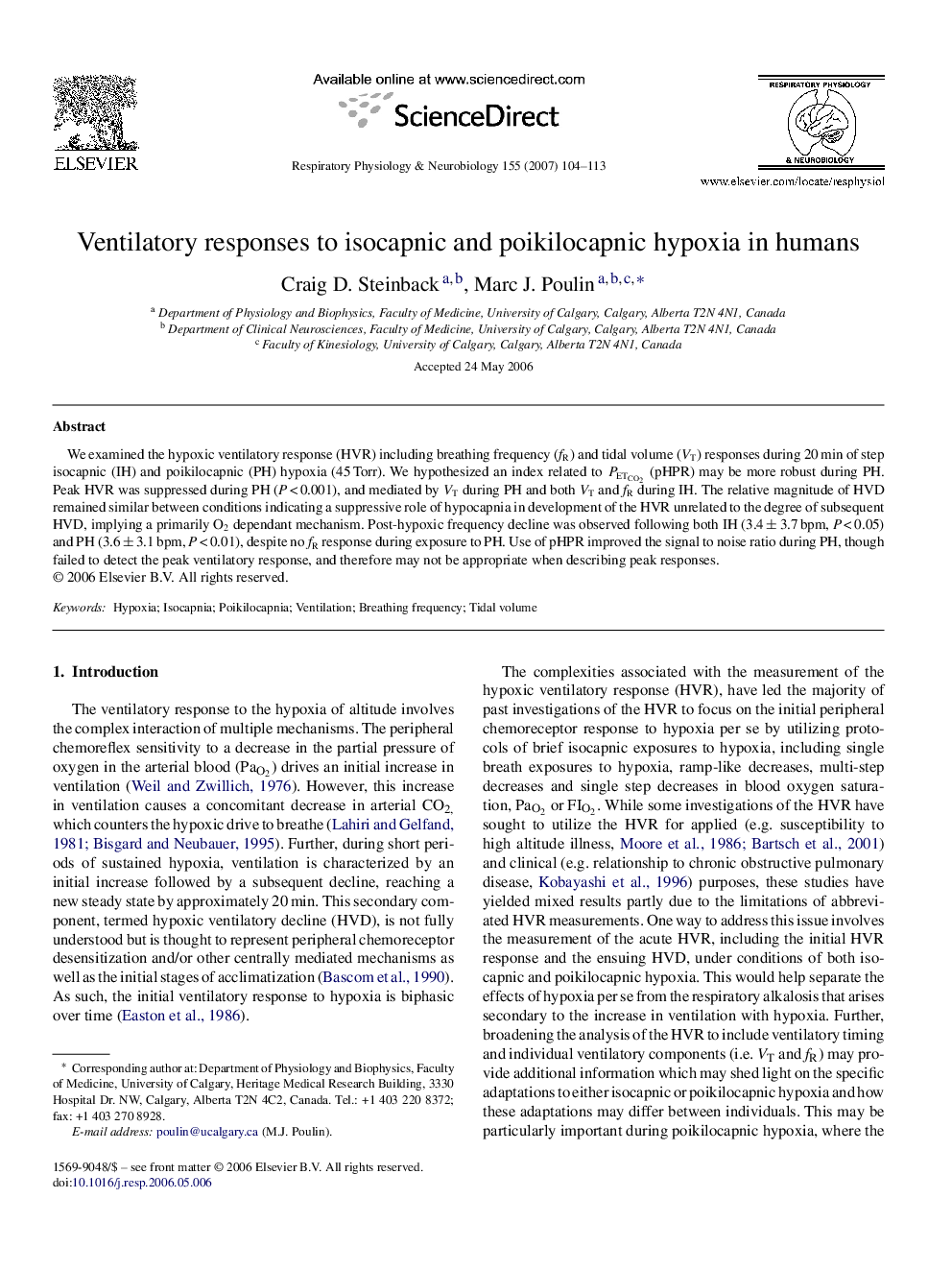| Article ID | Journal | Published Year | Pages | File Type |
|---|---|---|---|---|
| 2848536 | Respiratory Physiology & Neurobiology | 2007 | 10 Pages |
We examined the hypoxic ventilatory response (HVR) including breathing frequency (fR) and tidal volume (VT) responses during 20 min of step isocapnic (IH) and poikilocapnic (PH) hypoxia (45 Torr). We hypothesized an index related to PETCO2PETCO2 (pHPR) may be more robust during PH. Peak HVR was suppressed during PH (P < 0.001), and mediated by VT during PH and both VT and fR during IH. The relative magnitude of HVD remained similar between conditions indicating a suppressive role of hypocapnia in development of the HVR unrelated to the degree of subsequent HVD, implying a primarily O2 dependant mechanism. Post-hypoxic frequency decline was observed following both IH (3.4 ± 3.7 bpm, P < 0.05) and PH (3.6 ± 3.1 bpm, P < 0.01), despite no fR response during exposure to PH. Use of pHPR improved the signal to noise ratio during PH, though failed to detect the peak ventilatory response, and therefore may not be appropriate when describing peak responses.
